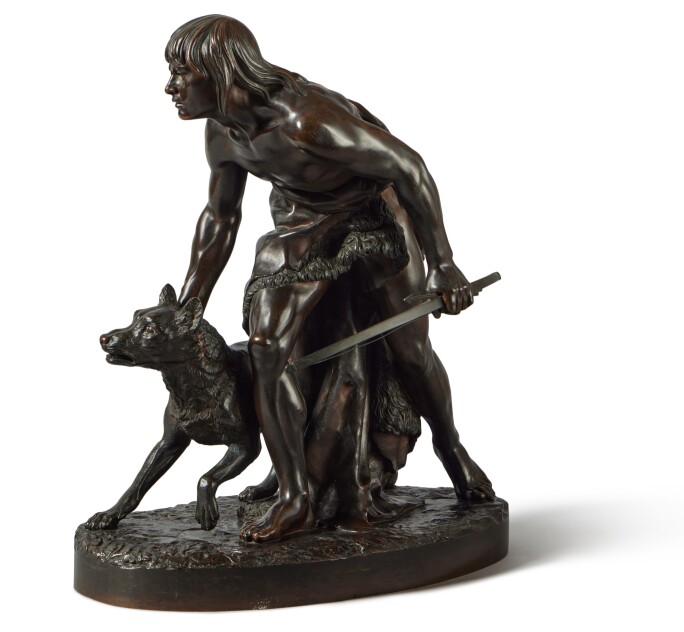“I like to express movement in my figures. It’s a fascinating problem which I’m always trying to solve.”
As a Minnesota native, Paul Manship spent his childhood exploring the woods and nearby lakes in his hometown of Saint Paul. The motif of the Native American hunter elicited fond memories from Manship’s youth spent outdoors, and he revisited this form in various poses throughout his career– a reflection of the strong personal association that it evoked for him.
In 1912, Manship returned from a three-year fellowship at the American Academy in Rome, where he developed a deep appreciation for archaic Greek art. Drawn to the naturalistic style, simplification of forms, and attention to proportions perfected in Greek archaism, Manship set out to incorporate these classical teachings into his early twentieth century sculptures.


When the son of Thomas Cochran– a well respected banker in the community– commissioned Manship to sculpt the centerpiece of the Cochran Memorial Park in June of 1925, he conceived of Indian Hunter and His Dog as a lifesize bronze to adorn the park’s fountain (fig. 1). “I have decided to make an Indian hunter, with his dog, running–in bronze, life size. This will be the central motif in the basin, 22 feet in diameter,” he wrote to his brother Luther at the time of conception (“Study for Indian Hunter and His Dog,” Minnesota Museum of American Art, accessed 23 March 2023). The resulting sculpture depicts the pair running swiftly in unison, their graceful silhouettes outstretched to mirror one another. The stylized pattern of the boy’s hair and the dog’s fur are a clear instance of Manship’s interest in archaic Greek sculpture. More specifically, though, the choice of a Native American hunting subject recalls John Quincy Adams Ward’s The Indian Hunter, conceived decades prior in 1860 (fig. 2). More fluid and slender than Ward’s rendition, the passage of time is evident in Manship’s hunting subject, which is increasingly modern and shows the influence of the flourishing Art Deco movement. The Wolf Family Collection includes both Ward and Manship’s respective renditions of the Indian hunter subject, which will offer a side by side view of the evolution of this sculptural theme.
“This lithe figure recalls the Diana and Actaeon, but it is more realistic in pace and design; because of a more fluid form it gives a better impression of movement.”
The success in Manship’s Indian hunter lies in his ability to harness such a great deal of movement in his figures. The animation of the young hunter and his companion contributes to this feeling of urgency ascribed to the chase. Combining human and animal figures into beautifully dynamic poses is one of the artist’s greatest skills. From Europa and the Bull to Actaeon and Flight of Europa, his desire to effortlessly fuse the bodies and postures of adjacent figures heavily contributes to the prevailing appeal of Manship’s sculptures–the present work being no exception. His ability to take a classic Native American theme and infuse it with such immense movement and energy demonstrates Manship’s mastery of traditional subjects treated with modern artistic taste.
In response to the praise he received for the lifesize version of Indian Hunter and His Dog in Cochran Memorial Park, Manship issued a reduced cast of the work in an edition of twelve. The present work is an example of this smaller cast size. Other examples of this reduced cast reside in the Addison Gallery of American Art, The John Herron Art Institute, The Metropolitan Museum of Art and the Corcoran Gallery of Art.